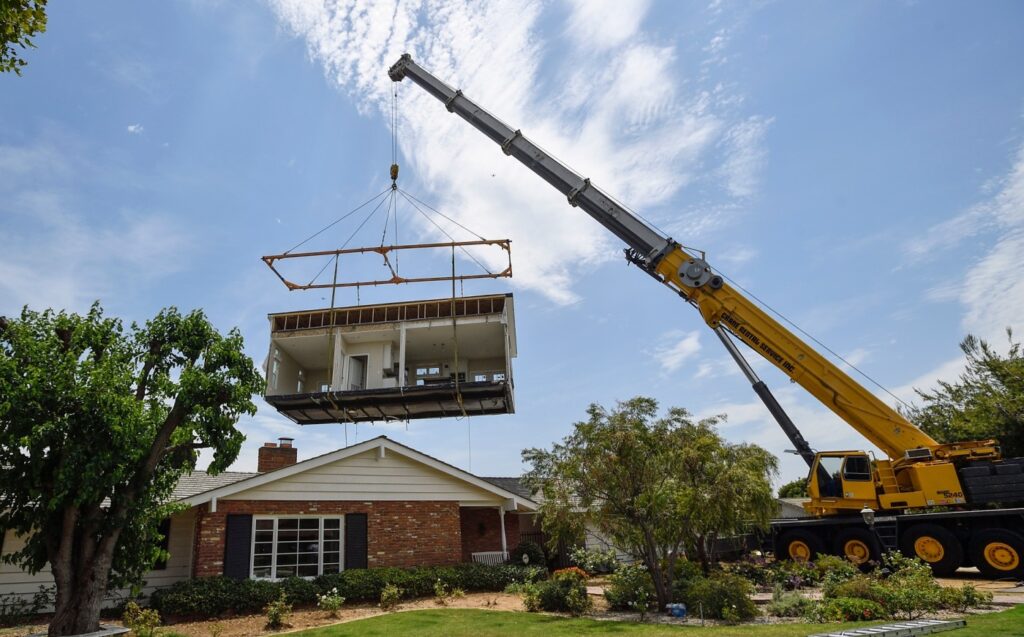
It just got a lot easier to qualify for a mortgage covering the construction costs of an accessory dwelling unit, commonly called casitas, in-law units and granny flats.
On June 1, Freddie Mac announced ADU rental income on a single-unit primary residence can be used to qualify for a mortgage. Previously, rental income could be used only by disabled borrowers to qualify for loans to build units for their caregivers.
Additionally, Freddie expanded its mortgage menu to provide purchase or refinance loans for one ADU on 2- and 3-unit properties. Previously, it was single-unit ADU financing only.
The big opportunity is a combination loan covering the purchase of a home and the construction of an ADU.
Freddie’s Choice Renovation Mortgage allows “first-time” buyers who haven’t owned a home in the past three years to put as little as 3% down and build an ADU. Repeat buyers who have owned a property within three years need to put 5% down.
The down payment is based upon the completed value of the property or the sales price plus the cost of the project, whichever is less.
For example, say the purchase price is $475,000 and ADU construction costs $150,000. That’s a total cost of $625,000. If the appraised value of the home and the completed ADU is projected to be $700,000, the down payment would be based on the lower value of $625,000 – or $18,750 for a first-time buyer or $31,250 for a repeat buyer.
There are no income restrictions. And being able to consider the ADU rents may mean the difference between a loan denial and qualifying in high-cost California. ADU rents cannot exceed 30% of your total qualifying income.
Choice Renovation can also be used to refinance your existing first mortgage and pay off short-term debt used for ADU construction.
ADU construction costs run about $200 per square foot in Orange and San Diego counties, compared with $329 per square foot in the Bay Area, according to Dan Dunmoyer, president and CEO of the California Building Industry Association. The average ADU size is 700-750 square feet, and the average rent is $2,000 to $2,800 a month.
Let’s say you added a 725 square foot ADU at $200 per square foot, for a total cost of $145,000. Assuming you get a 30-year mortgage at 5%, the payment would be about $925 per month, including taxes and insurance. If the rent totals $2,400 per month, you just made yourself a handsome $1,475 per month. Can you say smart investment?
It got a lot easier to add ADUs in California in 2020 after state lawmakers removed lots of red tape and timeline restrictions.
ADUs will help the California rental property shortage, but in a small way.
Figures from state and industry officials show the number of new ADUs jumped from no more than 9,000 in 2018 to more than 19,000 in 2021. Seventy thousand U.S. homes sold in 2019 had an ADU, up from 8,000 in 2000, according to a 2020 Freddie Mac report.
“The growth of accessory dwelling units (ADUs) in the United States has been dramatic, particularly in high-cost areas seeing significant population growth,” the report said. ADU demand is highest in California, Florida, Texas and Georgia.
The devil is in the details.
For example, Freddie financing requires ADUs to have a separate entrance, a kitchen and a bathroom.
The borrower can occupy the ADU and rent out the home. Attached or detached ADUs are acceptable. Even a garage conversion works.
Besides stick-built ADUs, there are manufactured ADUs that are trucked in and hoisted into place with a crane. Even some homebuilders are adding ADUs as an option, Dunmoyer said.
When picking a contractor, be prudent, cautious and careful. Take the time to tour their completed projects. Thoroughly interview references and check licensing. Finding a competent, dependable and reasonably priced professional is key.
(Staff chart)
Freddie Mac rate news: The 30-year fixed rate averaged 5.23%, 14 basis points higher than last week. The 15-year fixed rate averaged 4.38%, 6 basis points higher than last week. The 5-year ARM averaged 4.12%, 8 basis points higher than last week.
The Mortgage Bankers Association reported a 6.5% decrease in mortgage application volume from the previous week.
Bottom line: Assuming a borrower gets the average 30-year fixed rate on a conforming $647,200 loan, last year’s payment was $785 less than this week’s payment of $3,510.
What I see: Locally, well-qualified borrowers can get the following fixed-rate mortgages without points: A 30-year FHA at 4.625%, a 15-year conventional at 4.375%, a 30-year conventional at 5.25%, a 15-year conventional high-balance ($647,201 to $970,800) at 5.25%, a 30-year conventional high-balance at 5.625% and a 30-year purchase jumbo at 4.75%.
Eye catcher loan of the week: A 30-year jumbo mortgage, locked for the first five years at 3.75% with 1 point.
Jeff Lazerson is a mortgage broker. He can be reached at 949-334-2424 or [email protected]. His website is www.mortgagegrader.com.
Related Articles
Why adjustable-rate mortgages are still risky
Vulnerable borrowers should pull cash-out before inflation sinks economy
Mortgage rates dip as homebuying hints at ‘normalizing’
Mortgage rates are in for a bumpy ride in June
Which president did the best job with inflation?
